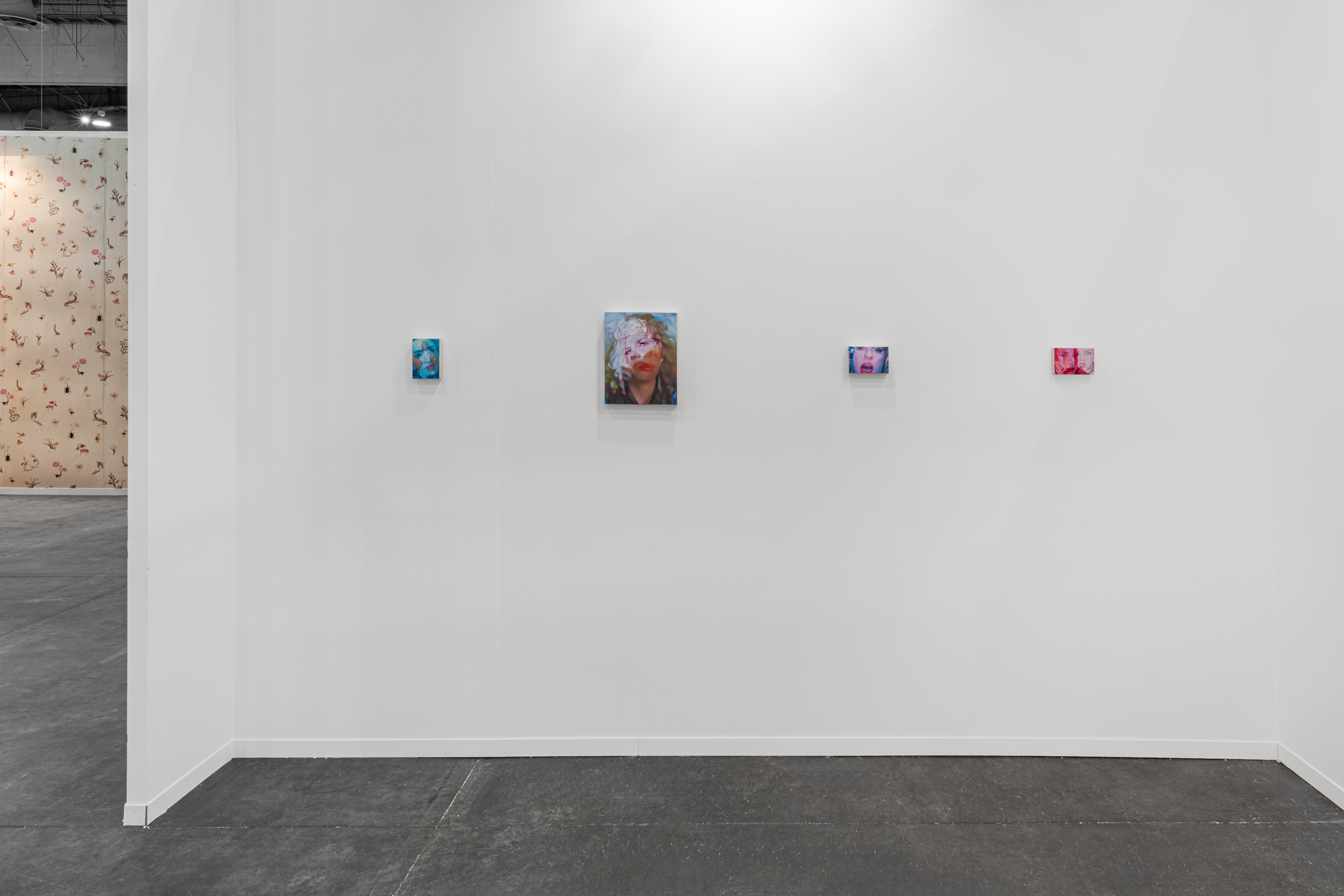Zona Maco, 2024
Julia Maiuri
![]()
![]()
![]()
![]()
![]()
![]()






Cross dissolves are a film tool used to communicate transcendence: of time, place, person or being. They facilitate transition and act as the filmmakers’ time machine. Characters transform into evolved versions of themselves in the blink of an eye, time moves from present to fu- ture in a flash, and setting instantly transforms from here to there. But Julia Maiuri’s paintings exist in the in-between: neither this place nor that, present nor future. Maiuri has invented cross dissolves to draw connections between repetitive character tropes, visual motifs, and pe- riods across film. This body of work created for Zona Maco marks a slight shift, wherein Maiuri utilizes cross dissolves within existing films and videos. Instead of creating them herself, she discovers them as they spontaneously occur, only manipulating the paused transition through cropping and color saturation. The process has provided new and ex- citing challenges, allowing more complex compositions to arise, some- times varying from figurative to abstract as faces melt into architecture, landscapes, animals, and other people. While Maiuri introduces more naturalistic colors into this body of work, the cross dissolves and satu- rated colors introduce a fantastical, other-worldly element to the paint- ings. References include stills from films such as Vertigo (1958), Picnic at Hanging Rock (1975), and Hausu (1977) in addition to screenshots from music videos including Sinéad O’Connor’s Mandinka (1987) and Nothing Compares 2 U (1990) as well as Eurythmics’ Love Is a Strang- er (1991). These songs and accompanying music videos give insight into the intensity and sorrow of falling in and out of love, as well as the transformation of self throughout that emotional journey. Culling imag- ery from films that blend romance and nostalgia with horror, Maiuri ex- plores more intense forms of vulnerability resulting in compositions im- bued with airs of desire, obsession, longing, betrayal, regret, and rebirth.